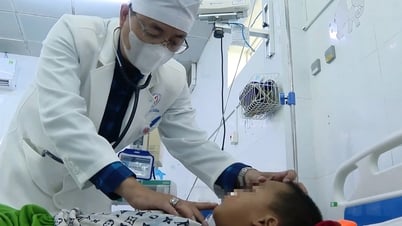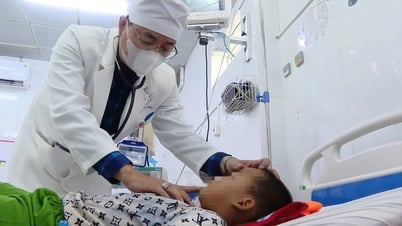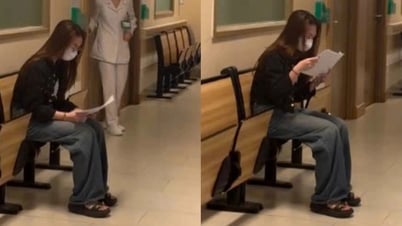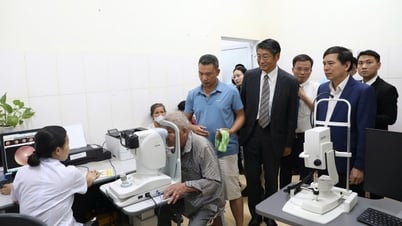The Central Hospital for Tropical Diseases has just successfully performed surgery on Mr. NXC (40 years old, Hanoi), who suffered from chronic subdural hematoma, at risk of right hemiplegia, after a motorbike accident.
Two months ago, Mr. C. fell off his motorbike and his head (while wearing a helmet) hit the back of a truck. After the accident, he received first aid and a brain scan showed no injuries, only minor scratches on his arms and legs.
Recently, he began to have headaches. In particular, in the past two weeks, the pain gradually increased, his vision was blurred and he was weak on the right side of his body. When Mr. C. went to the Central Hospital for Tropical Diseases for examination, a CT scan of his brain revealed a chronic subdural hematoma in the left hemisphere of his brain, 3.2 cm thick, compressing the brain parenchyma.
Specialist Doctor Nguyen Quang Thanh, Cranial Neurosurgery expert (Central Hospital for Tropical Diseases) said that chronic subdural hematoma often does not appear immediately after trauma but progresses silently over several weeks to several months. Common symptoms include headache, hemiplegia, difficulty speaking, dizziness, nausea, etc.
 |
Specialist Doctor 2 Nguyen Quang Thanh, Cranial Neurosurgery expert (Central Hospital for Tropical Diseases) examines a patient after surgery. |
In the case of patient C., the doctors decided to perform the surgery using the awake brain surgery technique. This is a modern method, without general anesthesia, so the patient remains conscious. During the surgery, which lasted more than 1 hour, the patient was able to communicate with the doctor.
"With this method, the surgeon closely monitors nerve function, controls the surgical procedure well, avoids damaging nerve fibers and healthy brain tissue around the hematoma, helping to preserve maximum motor and cognitive function for the patient. One day after surgery, Mr. C. can eat, talk, and move normally," said Dr. Thanh.
According to Dr. Thanh, awake brain surgery is considered for cases of chronic subdural hematoma, external ventricular drainage, or brain tumor surgery in important functional areas.
This method not only helps remove subdural hematoma but also minimizes sequelae caused by hematoma, improving the ability to restore neurological functions.
Source: https://nhandan.vn/benh-nhan-tinh-tao-tro-chuyen-voi-bac-si-suot-ca-mo-nao-post879357.html





![[Photo] Prime Minister Pham Minh Chinh chairs conference on anti-smuggling, trade fraud, and counterfeit goods](https://vphoto.vietnam.vn/thumb/1200x675/vietnam/resource/IMAGE/2025/5/14/6cd67667e99e4248b7d4f587fd21e37c)






















































































Comment (0)